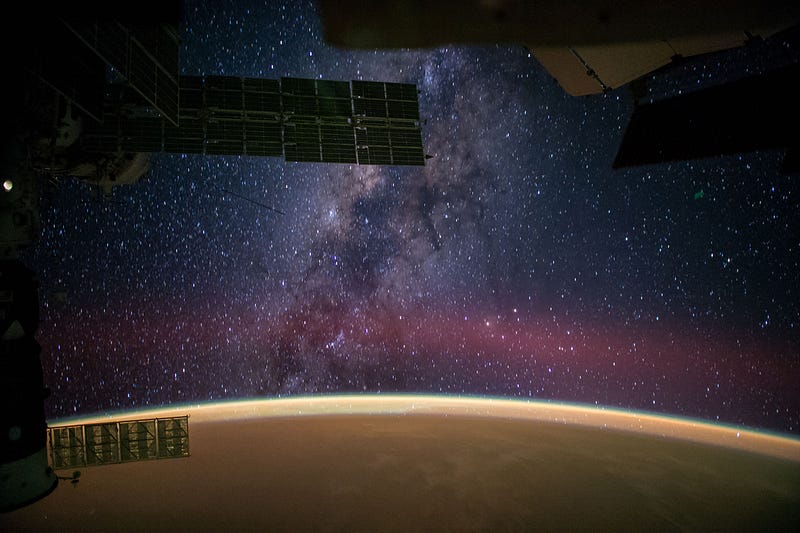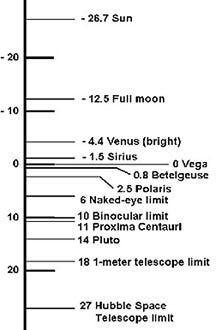Exploring the Visibility of Stars in Our Night Sky
Written on
Chapter 1: The Enchantment of the Night Sky
As a child, nestled in a sleeping bag beneath the vast sky of Northern California, I was captivated by the Milky Way—a breathtaking cosmic river of shimmering light punctuated by stars, both faint and bright. I would attempt to count the twinkling gems in a small section of sky, losing count after only a few.
However, my youthful memories were far from the reality of star visibility.
In actuality, our Milky Way Galaxy is home to approximately 100 billion to 400 billion stars, yet nearly all of them are too dim for the human eye to perceive. The majority of these luminous spheres, composed mainly of hydrogen and helium, remain hidden behind interstellar dust and gas, preventing even the most advanced telescopes from detecting their light.

The Milky Way is stunning, but don’t expect it to appear as vibrant as it does in long-exposure photographs. Photo: Pixabay/theartofsounds
With the increasing light pollution from urban developments—ranging from skyscrapers to streetlights—most people today will never witness the myriad stars I saw during those summer nights in the '70s. Studies indicate that around 99% of individuals in the U.S. and Europe are unable to see the full expanse of the Milky Way.
According to NOAA scientist Chris Elvidge, “We have entire generations in the United States who have never glimpsed the Milky Way. It is a significant aspect of our connection to the universe, and we have lost it.” Light pollution has even been shown to disrupt sleep patterns for those residing in urban areas worldwide.

This nighttime view of the U.S. is a meticulously processed image from NASA, combining satellite snapshots taken over several nights to ensure a cloud-free perspective while filtering out natural lights such as the moon and fires. Credit: NASA/EOS/Earth Observatory
Counting Stars: What’s Actually Visible?
So, how many stars can we realistically observe? Even before the invention of electric lighting, our ancestors didn’t see millions.
From any given location on Earth, the maximum number of stars visible to the naked eye, under ideal dark conditions without moonlight and with clear vision, is estimated to be around 4,548, as per a high-end calculation from Sky & Telescope. More conservative estimates suggest that between 2,000 and 2,500 stars is a more attainable figure.
In typical suburban settings, light pollution obscures dimmer stars, leaving roughly 450 visible—many of which may be blocked by buildings or trees. In denser urban environments, this number drops even further.
“A person living in a suburb of Boston is likely to see more stars compared to someone in a suburb of New York,” explains meteorologist Joe Rao, a skywatching authority and former writer for Space.com.
In larger cities, you might spot around 35 stars, provided tall buildings aren’t obstructing your view. If you glance up from Times Square in New York City, chances are you'll be fortunate to see even a single star.

Astronauts have the privilege of seeing more stars than we do because they are above the blurring effects of Earth’s atmosphere. This image, taken from the Space Station by astronaut Reid Wiseman, captures the Milky Way’s brilliance against the backdrop of glowing Sahara sands. Photo: NASA/Reid Wiseman
The Shift in Star Visibility Over Time
To grasp how our view of the night sky has transformed, I consulted Rao for some historical context. With a lifetime of stargazing experience and as a lecturer at New York’s Hayden Planetarium, he recalled his childhood visits to relatives located about 50 miles north of Manhattan.
He reminisced, “From that spot, there was no sign of any light pollution from New York City. The Milky Way appeared not as a hazy glow but with granularity and texture.”
This clarity indicated a limiting magnitude close to 6.8, where larger numbers signify dimmer stars. For reference, the brightest stars are around 1st magnitude, with Sirius being the most luminous in our night sky at a negative magnitude of -1.5. Notably, our sun is the brightest object visible during the day, masking all other stars.
The scale is logarithmic, meaning a 6th-magnitude star is 100 times dimmer than a 1st-magnitude star.

Graphic: Harvard/NASA/SAO
What About Today's Visibility?
“On my best nights, I see a faint glow that resembles twilight, reaching up to 45 degrees high in my southern sky—thanks to the glare from both Westchester and New York City,” Rao noted. He estimates that the limiting magnitude has now dropped to around 4.8.
“This means that over the last fifty years, the brightness of the sky has increased to the point that I can no longer see stars that are six times dimmer than what I could observe back then. While I can still catch glimpses of the Milky Way on summer and fall evenings, it becomes increasingly difficult as it sinks closer to the horizon, lost in the haze,” he explained.
The International Dark Sky Association provides extensive resources on light pollution and offers suggestions for individuals and governments to help preserve the night sky.

The left photo showcases a view from Leamington, UT, when the population was approximately 217. The right image captures Orem, UT, with a population around 400,000 during the same timeframe. Photographer Jeremy Stanley aimed to illustrate the stark contrast in light pollution. Credit: Via Wikipedia, CC by 2.0.
Seeking the Stars: A Dark Sky Adventure
If you have never experienced the majesty of the Milky Way, consider seeking out a dark location in the countryside on a summer night. Depending on your location, you may need to venture deep into the mountains (preferably on a moonless night). National parks often provide excellent opportunities for stargazing. The International Dark Sky Association has compiled a list of potential destinations.
For those living in urban or suburban areas, a drive out of town to a secluded road can offer a glimpse of the stars. The distance required will depend on the size of the city you are near. For instance, a 30-minute drive north of Phoenix reveals an impressive sky, despite the glow from the city obscuring the dimmer stars in the southern horizon. Even in these locations, I find that I can still observe about 70% of the details I remember from my childhood.
It’s important to note that while dark skies provide a breathtaking experience, don’t expect to see the vibrant colors often depicted in photographs. Such images require long exposure times and sensitive equipment to capture what the naked eye cannot perceive. Nonetheless, the Milky Way, or even a star-filled sky, remains a remarkable sight.
Chapter 2: The Science Behind Star Visibility
In this insightful video, Neil deGrasse Tyson articulates how many stars are visible in the night sky, exploring the factors that contribute to our perception of stars and their visibility.
This video delves into the question, "How many stars can we see at night?" and discusses the impact of light pollution on star visibility.